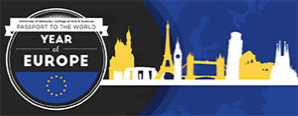
The Journey to Modern Europe: Evolution of the European Union
Preview

Description
At this point, the European Economic Community began to expand. Plans for a common currency began and an exchange rate mechanism was created for the current rates to fluctuate against each other.
The first expansion was January 1, 1973 when Denmark, Ireland, and the United Kingdom joined the EEC. This would be the first of many expansions. On June 7-10, 1979, EEC citizens were able to directly elect members of the EEC parliament for the first time. Originally, they were delegated by national parliaments. As a result, parliament’s influence raised.
In the 80s, the EEC expanded twice. On January 1, 1981, Greece joined and on January 1, 1986, Spain and Portugal entered into the Union.
On February 17, 1986, the Single European Act was enacted, and it hoped to create a single market among EEC countries. It would also give more power to parliament and increased powers in environmental protection. The late 80s were also significant for the collapse of Communism in the Eastern European countries, and unification of Germany.
Curation Date
8-2016
Creative Commons License

This work is licensed under a Creative Commons Attribution-Share Alike 4.0 International License.
Keywords
European Union, EU, European Economic Community, EEC


Photo Source
Image from the Centre Virtuel de la Connaissance sur l’Europe, and available online.
Source: COMMISSION EUROPÉENNE, DG X. Représentation de la Commission européenne au Luxembourg (sous la dir.). Europa Grafica, Unir des peuples. Associer des États Nations : Exposition Europa Grafica; Luxembourg, du 29 avril au 14 mai 1995. Luxembourg: Office des publications officielles des Communautés européennes, 1995. 130 p.
© Europa Grafica - Commission européenne Représentation au Luxembourg
Original description: "Poster published in Luxembourg during the campaign for the first elections to the European Parliament by direct universal suffrage, held on 10 June 1979."